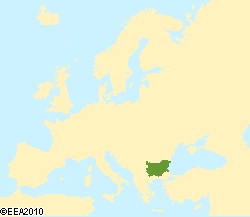Document Actions
Drivers and pressures

The major threats and challenges to biodiversity in Bulgaria are:
- human-driven devastation, fragmentation and loss of habitats;
- environmental pollution;
- direct destruction and exploitation;
- genetic erosion and the import of alien species;
- global climate change.
The ratio of land affected by humans (anthropogenous and farmland) to natural/semi-natural land remained 41.55-58.45% for the three Corine Land Cover base years (CLC 1990, 2000, 2006). Fragmentation − or the separation of habitats − increased, producing a negative effect on ecosystem function. When grouping areas into CORINE classes for the 13 basic ecosystem types (E's SEBI 2010 – 4 indicator: Ecosystem Coverage), changes in land cover over the three years were minimal (0-0.14 %).
Invasive species:
The National Strategy for Conserving Biodiversity and the National Action Plan 2006-2010 identifies invasive and introduced species as one of the main threats to national biodiversity.
An assessment of foreign and invasive species in Bulgaria has shown that their influence on natural ecosystems is similar to findings elsewhere in continental Europe, as the most sensitive and endangered are water ecosystems. Action campaigns involve increasing public awareness; creating research capacity; drafting legislative changes and developing strategic documents on national policy in relation to invasive species. Moreover, special measures have been introduced to address invasive species with a harmful economic impact. This involves studying the biology and ecology of the species, their natural enemies and methods for reducing populations and restricting their impact. Examples of such species are Dreisena polymorpha, Rapana tomasiana and Cameraria ochridella to name but a few. Measures to restrict the spread of invasive plant species are also being introduced in some sensitive Danubian and Black Sea areas.
In addition, the most problematic invasive species have been defined and descriptions are now available of 45 invasive animal species and 50 invasive plant and fungus species. (Source: SEBI 2010 -10).
- Links to related indicators (CSI - Core Set of Indicators)




